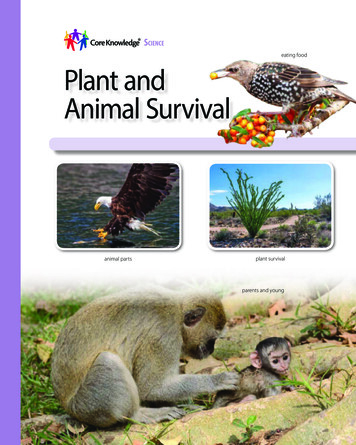
Transcription
SCIENCEeating foodPlant andAnimal Survivalanimal partsplant survivalparents and young
THIS BOOK IS THE PROPERTY OF:STATEBook No.PROVINCEEnter informationin spacesto the left asinstructed.COUNTYPARISHSCHOOL DISTRICTOTHERCONDITIONISSUED TOYearUsedISSUEDRETURNEDPUPILS to whom this textbook is issued must not write on any page or markany part of it in any way, consumable textbooks excepted.1. Teachers should see that the pupil’s name is clearly written in ink in thespaces above in every book issued.2. The following terms should be used in recording the condition of the book:New; Good; Fair; Poor; Bad.
Plant andAnimal Survival
Creative Commons LicensingThis work is licensed under aCreative Commons Attribution-NonCommercial-ShareAlike4.0 International License.You are free:to Share—to copy, distribute, and transmit the workto Remix—to adapt the workUnder the following conditions:Attribution—You must attribute the work in thefollowing manner:This work is based on an original work of the CoreKnowledge Foundation (www.coreknowledge.org) madeavailable through licensing under a Creative CommonsAttribution-NonCommercial-ShareAlike 4.0 InternationalLicense. This does not in any way imply that the CoreKnowledge Foundation endorses this work.Noncommercial—You may not use this work forcommercial purposes.Share Alike—If you alter, transform, or build upon this work,you may distribute the resulting work only under the same orsimilar license to this one.With the understanding that:For any reuse or distribution, you must make clear toothers the license terms of this work. The best way todo this is with a link to this web /4.0/All Rights Reserved.Core Knowledge , Core Knowledge Curriculum Series ,Core Knowledge Science , and CKSci are trademarksof the Core Knowledge Foundation.Trademarks and trade names are shown in this bookstrictly for illustrative and educational purposes and arethe property of their respective owners. References hereinshould not be regarded as affecting the validity of saidtrademarks and trade names.ISBN: 978-1-68380-581-6Copyright 2020 Core Knowledge Foundationwww.coreknowledge.org
Plant andAnimal SurvivalTable of ContentsChapter 1Luzi Saves an Owl . . . . . . . . . . . . . . . . . . . . . . . . . . . . . . . 2Chapter 2What Parts Do Animals Have? . . . . . . . . . . . . . . . . 8Chapter 3What Parts Do Plants Have? . . . . . . . . . . . . . . . . . . . 14Chapter 4How Do Animals Use Their Senses? . . . . . . . . . . 20Chapter 5How Do Plants Respond tothe Environment? . . . . . . . . . . . . . . . . . . . . . . . . . . . . . . . 26Chapter 6Plants Are Alike and Different . . . . . . . . . . . . . . . . 32Chapter 7Animals Are Alike and Different. . . . . . . . . . . . . . 36Chapter 8How Do Adult Animals Carefor Their Young? . . . . . . . . . . . . . . . . . . . . . . . . . . . . . . . . . 40Chapter 9Surviving Young . . . . . . . . . . . . . . . . . . . . . . . . . . . . . . . . 46Chapter 10 Science in Action . . . . . . . . . . . . . . . . . . . . . . . . . . . . . . . . 50
CHAPTER1Luzi Saves an OwlLuzi lives in the Sonoran Desert in Arizona. It is a hot, dryplace. She hikes there with her family every Saturday.One spring day, Luzi finds a small owl sitting on theground. It has soft, white feathers mixed in with brownand gray ones.2
Luzi bends down to look at the owl. It raises its wings. It bobsits head. But it does not fly away. Luzi is worried. She thinks itmight be hurt.Luzi’s mother decides they should take the owl to a veterinarian.Dr. Moreno is the animal doctor who cares for Luzi’s dog and cat.3
Dr. Moreno checks the owl’s legs and wings. She smiles andtells Luzi, “This little owl is not hurt. It is just too young to fly. Itis a baby great horned owl. It probably fell from its nest.”Luzi thinks aboutwhere she found theowl. She saw a largesaguaro with a holein it. A woodpeckerflew out of the hole.Luzi wonders if owlsmake their nests insaguaro cactuses.4
“What do we do now?” Luzi asks. “Should we take it back tothe desert?”“No,” says Dr. Moreno. “We are not sure where its home is.Other animals might hurt an owl this small. We will take it toa place where humans can care for it. It can stay there until itlearns to fly and hunt for food. Then we can return it to thedesert to make a new home when it can take care of itself.”5
Dr. Moreno takes the owl to a place called the Desert WildlifeCenter. Luzi and her mother go to see where the owl will becared for. There are other animals there. Luzi sees a deserttortoise and a gray fox. She even sees a tarantula!Most of the animals have been rescued. Some of them hadbeen hurt. People now care for them while they heal. Someyoung animals were separated from their parents. People aretaking the place of their parents until these animals grow upenough to survive on their own.gray foxdesert tortoisetarantula6
The workers show Luzi how they will care for the owl. Theyshow her another owl that is almost old enough to bereleased back into the desert! It will practice flying in the bigyard. It must learn to eat food that it will find in the desert.They ask Luzi if she would like to be a volunteer at the center.She will learn how to help take care of the animals there. Luzisays yes. She is excited to help!7
CHAPTER2What Parts Do Animals Have?Workers at a wildlife center like the one caring for theowl Luzi found must know a lot about animals. Someanimals that need help can’t take care of themselvesbecause they are hurt. Others can’t take care ofthemselves yet because they are too young.Wildlife caregivers must know what animals needto live. They must know what the animals eat. Theymust know how the animals move around. Theworkers use what they know to care for the animals.In this picture, a wildlife caregiver feeds a baby sloth.8
All animals have parts. These parts have different purposes.Some parts help an animal find and catch food. Some partshelp an animal move from place to place. Some parts helpan animal breathe. All of an animal’s parts help it growand survive.Wings, legs, and eyes are some owl parts. This is an adult greathorned owl. What do its parts help it do?9
Most animals must move to stay alive. Some animals run.Some animals swim. Some animals hop from place to place.Animals have parts that help them move. The owl that Luzifound in the desert has wings. Wings enable birds to fly.Fish have parts thathelp them swim.A jackrabbit hasparts that help it hopquickly in the desert.A cheetah has partsthat help it run fast.10
Animals must eat to stay alive. They have parts that help themget and eat food. Some animals have bills that help themeat berries, nuts, and seeds. Some animals have sharp teeththat help them tear and eat meat. Some animals have longtongues that help them catch insects.A bird’s beak helps it gather seeds and berries.A frog catches insects with its tongue.11
Animals must get oxygen to stay alive. Some animals haveparts that help them live and breathe on land. Some animalshave parts that help them live and get oxygen that is inwater. Some animals can live and breathe both on land andin the water! Sharks have parts that help them get oxygenunderwater. Salamanders can breathe in oxygen on land andget oxygen from out of the water!12
What parts do these elephants have? What do those partsdo that helps the elephants survive? Think about yourfavorite animal. How does it move? How does it eat? Howdoes it breathe?13
CHAPTER3What Parts Do Plants Have?Animals have parts that help them grow and survive.Plants have parts that help them grow and survive,too. Plants can’t move like animals can. But plants canget water and sunlight. Plants can get air. Plants haveseeds. Some plants can even “eat” other living things!The desert marigold has parts that help it get whatit needs.14
Plants must get water to stay alive. They have parts calledroots that take in water. A plant’s roots grow under theground. Roots can be long or short. They can be thick or thin.They can grow deep into soil or stay close to the surface. Butthey all help a plant get the water it needs to survive.This prickly pear cactus lives in the Sonoran Desert. Its rootsare short and close to the surface. They can take in water rightafter a short rainfall.You can see the roots of this fallen tree, which grew deep intothe soil.15
When roots take in water, where does it go? It moves througha part called a stem. A stem helps get water to the plant’sother parts. It also helps hold a plant upright. Stems can bethick or thin. They can be hard or soft.A tree trunk is a kind of stem. It is thick and rough.This desert plant has many stems.16
Plants need sunlight to stayalive. Leaves are the part ofa plant that take in sunlight.They use sunlight and waterto make food for the plant.Leaves come in many shapesand sizes.Plants in shady places oftenhave large leaves so they cantake in more sunlight.17
Colorful flowers are probably the first thing you notice abouta plant. Insects notice flowers, too! They land on the flowers.They pick up pollen with their legs and wings. Then they carryit to other plants. This pollen is necessary for plants to makeseeds. Seeds grow new plants.Can you see the yellow pollen on the bee’s body?Seeds fall to the ground. New plants grow.18
Plants can’t bite or chew like animals can. But did you knowthat some plants can still “eat” other living things? An insectlands on the plant. It smells something sweet and crawlsinside. Then the plant snaps shut! The Venus flytrap closesto trap insects. The plant then gets some of the nutrients itneeds to survive.A pitcher plant traps bugsin a leaf that is a tube.These plants are unusual.Most plants do notconsume animals inthis way.19
CHAPTER4How Do Animals Use Their Senses?Animals need to move, eat, and breathe to stay alive.Animals also need to stay safe. Animals use their sensesto take in information about their environments. Anenvironment is where a plant or animal lives. Animalsalso use their senses to find food.Did you know a snake uses its tongue to smell?20
Most animals use their eyes to see their environments. Butsome animals don’t have eyes or cannot see well. They mustuse other parts to detect what is around them.Bats send out soundwaves. They sense howthe waves bounce offof things around them.This is how they findfood. It also helps themdetect threats.A star-nosed mole’seyes do not see well.But it has a nose tofeel its surroundings.It can touch twelveobjects in one second!An eagle has large eyesand excellent sight.It can see food fromalmost two miles away.21
Animals use hearing to stay safe and find food. Some animalshave very large ears. They can hear things that are far away.Other animals do not have ears at all. They can feel when thingsmove. They sense the air and the ground vibrate around them.A fennec fox’s large ears can hear food moving underground.A drum fish has a sac filled with air inside its body. The sacshakes when other animals swim nearby.22
Have you ever been bitten bya mosquito? Mosquitoes canfind you because they smellyour sweat or breath. Then, asthey get closer, they can feelthe heat from your body, too.Many animals rely on theirsenses of touch and smellto survive.A snake smells with its tongue.It also has a part on its headthat can feel heat.A grasshopper has tinyhairlike parts all over itsbody. It can feel when the airaround it moves.23
Animals respond to what they feel, hear, and smell aroundthem. What does an animal do when it senses danger? Whatdoes it do when it senses food?An octopussquirts ink toescape froma threat.An eagle spiesa fish from thesky. It swoopsdown quicklyto catch it.24
An iguana feels thatthe sand in its nest isfinally warm enough.Then it lays itseggs inside.A scallop has manytiny eyes. It closes itsshell and swims awaywhen it sees a threat.A cricket rubs its legstogether to make asound. The cricket’sbody has the mostenergy when it iswarm. That is why youhear the most cricketchirping in the summer.25
CHAPTER5How Do Plants Respond to theEnvironment?You read about how animals use their senses. Plantscannot see, hear, or smell like animals can. But theydo sense and respond to what happens aroundthem. Plants sense and respond to light. Theysense and respond to temperature. They sense andrespond to water. Some even sense and respondto touch.26
Plants need sunlight to grow and survive. Some plants needmore light than others. Plants respond to light in many ways.All plants use sunlightto make the food theyneed to grow.Some plants turnthemselves towardsunlight.Some plants bloombased on the changinglength of daylight.27
Plants respond to how hot or cold it is outside.Some plants wilt whenit is too hot. Wiltingmakes a plant’s leavesdroop away fromsunlight.You sweat whenyou’re hot. Plantsrelease water throughtheir leaves to cool off.Many trees losetheir leaves when itbecomes cold in thefall and days haveless sunlight.28
Plants need water togrow and survive. Theplant here is standing upstraight. It has enoughwater moving throughits stems and leaves.The plant here is wilting.Its stems and leaves havebecome soft and droopy.It needs more water.29
Do you remember the Venus flytrap plant from Chapter 3? Ithas spiky hairs on the surface of its leaves. When somethingtouches the hairs, the leaves snap shut. Plants respond totouch in other ways, too.Some plants grow toward things that they touch. They canwrap around or climb objects that are nearby.A plant’s roots cangrow away fromrocks and otherobjects underthe ground.30
What are some plants around your home? You can observethem. You can see how they respond to sunlight. You cansee how they respond to temperature. You can see how theyrespond to water. You can see how they respond to touch.31
CHAPTER6Plants Are Alike and DifferentRemember the desert where Luzi was hiking whenshe found the little owl? One type of plant shesaw there was a saguaro cactus. A saguaro cactusis green. It is prickly and tall. It has branches thatlook like arms. These are some of the traits of asaguaro cactus. Traits are how a plant or animal looksand acts.32
You can tell types of plants by their traits. For example, treesare larger than most plants. They have trunks. They grow leavesfrom their branches. They spread out to capture sunlight.How are these trees alike?33
Tree are alike in some ways, but they are different in otherways. Some trees are tall and thin. Some trees are wide. Someare extremely tall. How are these trees different?34
Offspring of living things get traits from their parents. Theywill look and act mostly the same. A young plant looks similarto its parent. But it looks different in some ways, too.young tomatoadult tomatoHow are theseyoung plants liketheir parents?How are theydifferent?young sunfloweradult sunflower35
CHAPTER7Animals Are Alike and DifferentThe Desert Wildlife Center caring for the owl Luzifound has a new bird! It is a cactus wren. The wren isbrown, white, and gray like the great horned owl. Italso builds its nest in a cactus. But this bird is not biglike the great horned owl. It is so small that it fits in aperson’s hand.36
How are birds similar and different? Animals of the sametype can have many of the same traits. For example, mostbirds fly. All birds have feathers, wings, and beaks. All birdslay eggs. Sometimes it can be hard to tell birds apart.How are these birds alike?37
But birds can be different, too. Some birds are very small.Others are large. Some birds eat meat. Others eat seeds andberries, or drink nectar from flowers. Some birds make nests inthe ground. Others make nests in trees and cacti. Different birdshave parts that differ to help them survive in different places.How are these birds alike and different?38
Animals get traits from their parents. They look and act mostlythe same. Baby animals become more and more like theirparents as they grow.Some types of baby animals look like their parents as soonas they are born. Other types of baby animals look differentat first. They change as they grow. They start to look morelike their parents.Which of these baby animals look like their parents?39
CHAPTER8How Do Adult Animals Carefor Their Young?Luzi enjoys helping at the Desert Wildlife Center. Sheis always excited to see the baby owl she rescued.Sometimes the owl is eating when she arrives. Theworkers at the center feed it with an owl puppet!40
A wildlife caregiver explains to Luzi that the young owl needsfood to grow. The little owl is more likely to take food froma puppet that looks like its mother or father. It is used togetting its food from a parent. Its parents cared for it whileit was in the nest. The workers do not want to teach the owlthat it gets food from humans. Adult owls catch food to feedits young.41
Living things can produce young. Many baby animals needhelp from their parents to survive. They are too young to findand catch their own food. Their parents help feed them.A red fox mother’sbody makes milkfor her young.An adult penguincatches fish forits chick.An Anna’shummingbird getsnectar from plants.It returns to the nestto feed the nectar toits offspring.42
Adult animals also help their babies stay clean. An adultmonkey picks bugs and dirt from its baby’s fur. A mothercheetah licks its cub to help it stay clean.43
Many baby animals are too young and too small to stay safeon their own. Their mothers and fathers protect them untilthey get bigger and stronger.Adult crocodilescarry their babiesin their mouths tokeep them safe.A mother kangaroo keepsher baby safe in a pouchon her belly.A group of adultelephants willsurround a calf tokeep it safe.44
You were a baby once, too! Human babies need a lotof special care. Human babies cannot do anything forthemselves when they are born. They cannot talk when theyare born. They cannot move on their own. They rely on theirparents for food and safety. Unlike most animals, humansstay with their parents for a long time.45
CHAPTER9Surviving YoungOne day, Luzi visits the Desert WildlifeCenter again. The owl has changedso much! It is bigger. It islearning to find and catchfood. The best part is thatit can fly! Soon it willbe able to return to itsnatural environment.46
As baby animals grow, they learn to care for themselves. Theycan find food. They can avoid danger. They do not need theirparents as much. Many baby animals can survive on their ownafter a few months. Some animals stay with their parents formany years.A young white-tailed deer stops drinking milk from its motherafter two months.Baby monkeys begin to climb trees when they are very young.47
Some baby animalsdo not need theirparents at all! Theyare able to survive ontheir own from birth.Most snake babiesslither away to findfood as soon as theyleave the egg.A baby brush turkeydigs its own way outof the nest. It can walk,run, and fly right away.Baby sea turtlesknow how to get tothe ocean as soonas they hatch.48
People in a wildlife center take care of animals in the hopethat the animals can one day take care of themselves. Someanimals that live with people will always need human care.Pets are different from wild animals. Both baby and adult petsdepend on humans for food, water, and shelter. They mightnot survive on their own, even when they are fully grown.Pets rely on humansfor food.Some pets rely onhumans to stay clean.When pets are sick,humans give themmedicine.49
CHAPTER10Science in ActionMeeting an Ocean NaturalistLuzi has been volunteering at the Desert WildlifeCenter for many months now. Her owl friend hasgrown bigger and stronger. The naturalists at thecenter believe it is now ready to survive on its own!At school, Luzi shares her story about the owl. Shetells her teacher and classmates about the peoplewho helped her at the wildlife center. Luzi’s teacher,Mrs. Croft, tells the class that the people whowork at the Desert Wildlife Center can help desertanimals because they know a lot about how desertanimals survive.50
Mrs. Croft tells her students, “We have been studying thedesert. There are rescue centers where naturalists help hurtor orphaned animals in all kinds of habitats. I know an oceannaturalist who can talk with us about what he does to helpmarine wildlife. He helps ocean wildlife just like Luzi’s friendshelp desert animals.”51
Today, Luzi’s class hasa virtual visitor. Mrs.Croft has set up a videocall with an oceannaturalist named Josue.Josue works at a seaturtle rescue center. Hehelps sea turtles thathave been injured.Sometimes sea turtles can get caught in fishing nets or hitby boat motors. Sometimes turtles mistake plastic garbagein the ocean for food. They eat the plastic and get sick. If theturtles are hurt or sick, people take care of them in tanks at therescue center until the turtles can survive on their own again.52
Scientists at the sea turtle rescue center solve some problemsto help the turtles survive. Scientists at the rescue centerdesign and build tanks to hold the turtles in water. The waterin the tanks must run through pumps and filters to keepit clean.53
Josue learns a lot about sea turtles. One way he studies turtlesis by observing them where they naturally live. But the seaturtles live in the ocean. How can Josue stay underwater tostudy the turtles? People need to breathe air to survive.Josue is a trained diver. He uses scuba gear to breatheunderwater. Josue tells the class that he uses breathingequipment invented by an ocean scientist named JacquesCousteau. /zhahk*coo*stow/“In fact,” Josue says, “Jacques Cousteau inspired me to work tosave sea turtles!”54
Jacques CousteauJacques Cousteau was a French scientist. He designeda breathing tool that allowed people to spendlong periods of time underwater. Scientistsused his invention to collect informationfrom below the ocean’s surface. Cousteaumade underwater films about the ocean,too. He wanted to show people how humanactivities were affecting living things there.He inspired people around the world tocare about the ocean and Earth’s otherenvironments, too.55
CK Sci Core Knowledge SCIENCE Series Editor-in-ChiefE.D. Hirsch Jr.Editorial DirectorsDaniel H. Franck and Richard B. Talbot
Subject Matter ExpertJoyce Latimer, PhDProfessorSchool of Plant and Environmental SciencesVirginia TechBlacksburg, VirginiaIllustration and Photo CreditsAB Forces News Collection/Alamy Stock Photo: 7adicaza/Alamy Stock Photo: 22bagefotostock/Alamy Stock Photo: 52aAlexandra/Alamy Stock Photo: 28aAlexey Stiop/Alamy Stock Photo: 17bAll Canada Photos/Alamy Stock Photo: 37a, 37b, 47aAnna Omelchenko/Alamy Stock Photo: 45Anthony Mercieca/Dembinsky Photo Associates/Alamy Stock Photo: 42cArto Hakola/Alamy Stock Photo: 15aAvalon/Photoshot License/Alamy Stock Photo:44a, 48aBarbara von Hoffmann/Alamy Stock Photo: 39ablickwinkel/Alamy Stock Photo: 12b, 19a, 21b, 23c,23d, 37c, 41Buddy Mays/Alamy Stock Photo: 11bCavan Images/Alamy Stock Photo: 31Cultura Creative (RF)/Alamy Stock Photo: 26Danita Delimont/Alamy Stock Photo: 25aDAVID HERRAEZ/Alamy Stock Photo: 49cDesign Pics Inc/Alamy Stock Photo: i, iii, 18aDinodia Photos/Alamy Stock Photo: 47bDorling Kindersley ltd/Alamy Stock Photo: 39dErika Betts/Alamy Stock Photo: 3bErnst Mutchnick/Alamy Stock Photo: 6cEvelyn Harrison/Alamy Stock Photo: 50F1online digitale Bildagentur GmbH/Alamy StockPhoto: 22a, 33bFederico Candoni/Alamy Stock Photo: 35bFLPA/Alamy Stock Photo: 14FocalPoint/Alamy Stock Photo: 18bFox kits and mother/Alamy Stock Photo: 42aGeoff Smith/Alamy Stock Photo: 27cGH Photos/Alamy Stock Photo: 33aGrant Heilman Photography/Alamy Stock Photo: 15bHal Beral/VWPics/Alamy Stock Photo: 20Helmut Corneli/Alamy Stock Photo: 24aIgor Stevanovic/Alamy Stock Photo: 27bImage Professionals GmbH/Alamy Stock Photo: 35dImage Source/Alamy Stock Photo: 34aimageBROKER/Alamy Stock Photo: Cover A, 10a, 10c,11a, 21a, 21c, 32, 34b, 54incamerastock/Alamy Stock Photo: 13Jack Barr/Alamy Stock Photo: 16aJacques Jacobsz/Alamy Stock Photo: 44cJakub Gojda/Alamy Stock Photo: 51joan gravell/Alamy Stock Photo: Cover D, 43aJohn Cancalosi/Alamy Stock Photo: 38bJohn Martin/Alamy Stock Photo: 35ajordiphotography/Alamy Stock Photo: 49aKathleen Stirling/Stockimo/Alamy Stock Photo: 53Li Ding/Alamy Stock Photo: 27aLuke Barnard/Alamy Stock Photo: 46Manfred Gottschalk/Alamy Stock Photo: 48bMarie Lemerle/Alamy Stock Photo: 43bMARKA/Alamy Stock Photo: 55bMatthew Cuda/Alamy Stock Photo: 38cMatthijs Kuijpers/Alamy Stock Photo: 23bMax Lindenthaler/Alamy Stock Photo: 33cMichal Fuglevič/Alamy Stock Photo: 25cMircea Costina/Alamy Stock Photo: 23aNature Photographers Ltd/Alamy Stock Photo: 36Nature Picture Library/Alamy Stock Photo: 4b,12a, 19bNigel Cattlin/Alamy Stock Photo: 29Noella Ballenger/Alamy Stock Photo: 9Panther Media GmbH/Alamy Stock Photo: 35cPaul Vinten/Alamy Stock Photo: 6bPaulo Oliveira/Alamy Stock Photo: 52bPremaphotos/Alamy Stock Photo: 25bPrisma by Dukas Presseagentur GmbH/Alamy StockPhoto: 38aRich Wagner/Alamy Stock Photo: 4aRichard Buchbinder/Alamy Stock Photo: Cover C, 16brobertharding/Alamy Stock Photo: 42bRolf Hicker Photography/Alamy Stock Photo:Cover B, 24bRon Niebrugge/Alamy Stock Photo: 6a, 39bRosanne Tackaberry/Alamy Stock Photo: 8Ryan Lepp/Alamy Stock Photo: 34cSmileus Images/Alamy Stock Photo: 28cSteve Bloom Images/Alamy Stock Photo: 39cSumiko Scott/Alamy Stock Photo: 10bTim Gainey/Alamy Stock Photo: 30aTravelscape Images/Alamy Stock Photo: 48cUnited Archives GmbH/Alamy Stock Photo: 55aWaileng Tan/Alamy Stock Photo: 44byork010/Alamy Stock Photo: 15cYuval Helfman/Alamy Stock Photo: 38dZoonar GmbH/Alamy Stock Photo: 17a, 49b
CK Sci Core Knowledge SCIENCEA comprehensive program in science, integrating topicsfrom Earth and Space, Life, and Physical Sciences withconcepts specified in the Core Knowledge Sequence(content and skill guidelines for Grades K–8).Core Knowledge SCIENCE units at this level include:Sun, Moon, and StarsPlant and Animal SurvivalExploring Light and SoundSimple MachinesHuman Body Systemswww.coreknowledge.orgISBN: 978-1-68380-581-6Core Knowledge Curriculum Series Series Editor-in-ChiefE.D. Hirsch Jr.
Animals use hearing to stay safe and find food. Some animals have very large ears. They can hear things that are far away. Other animals do not have ears at all. They can feel when things move. They sense the air and the ground vibrate around them. A fennec fox's large ears can hear food moving underground.
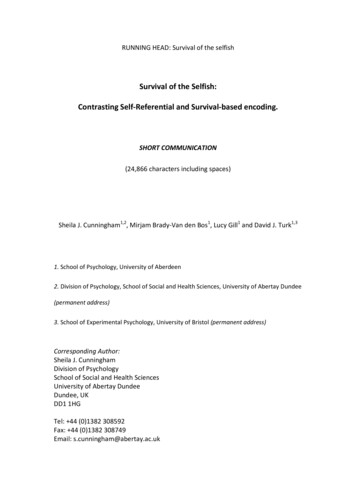
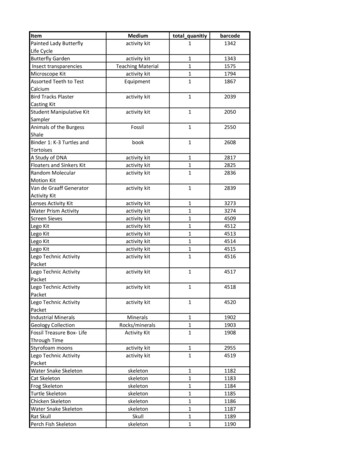
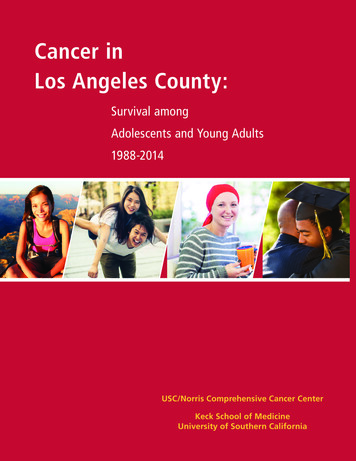

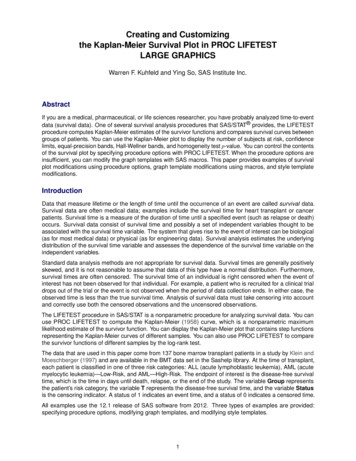




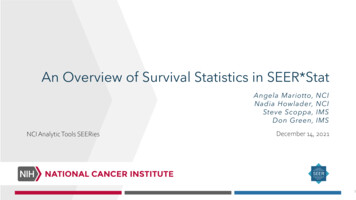

![[ST] Survival Analysis - Stata](/img/33/st.jpg)